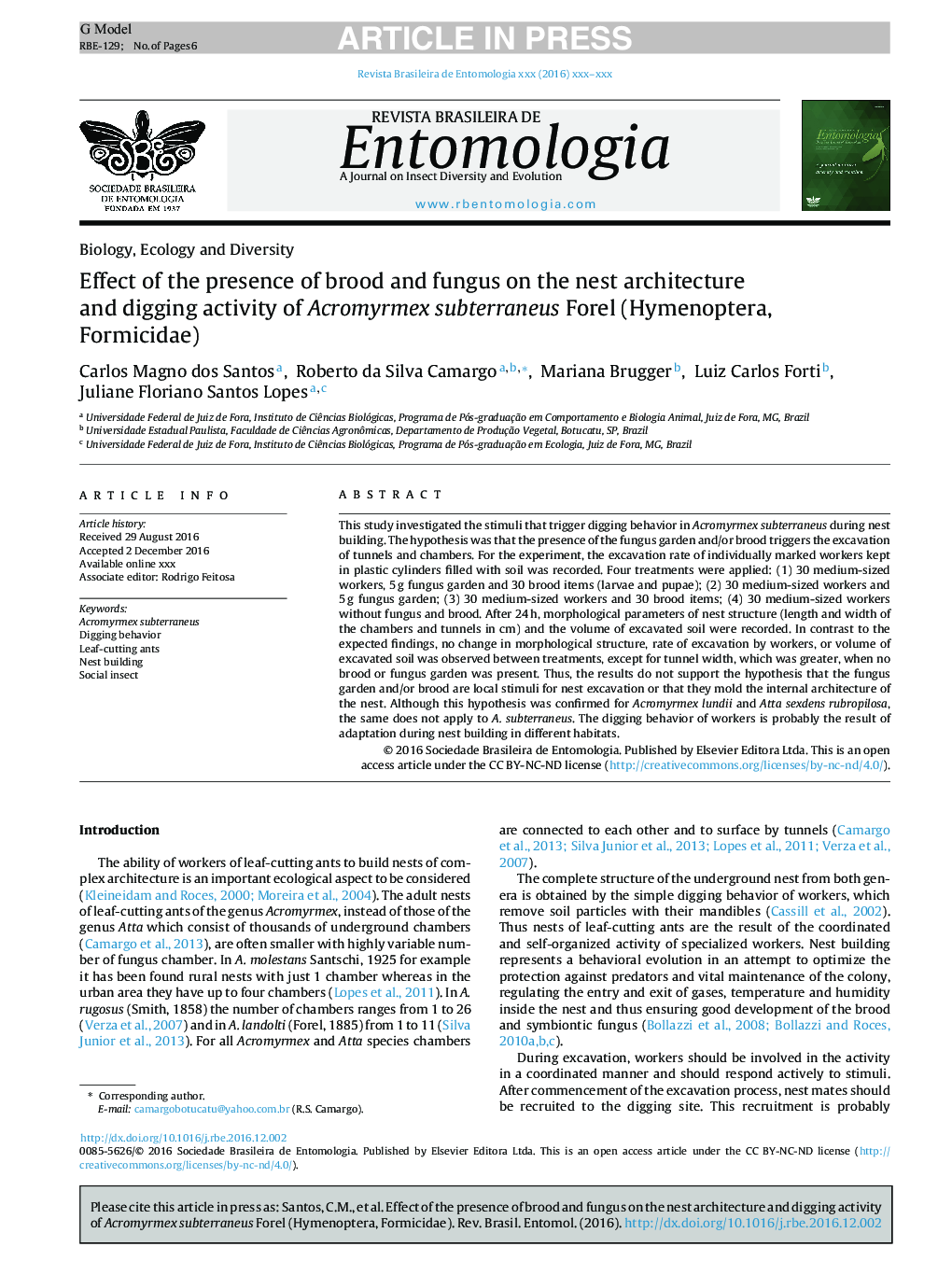| Article ID | Journal | Published Year | Pages | File Type |
|---|---|---|---|---|
| 8877295 | Revista Brasileira de Entomologia | 2017 | 6 Pages |
Abstract
This study investigated the stimuli that trigger digging behavior in Acromyrmex subterraneus during nest building. The hypothesis was that the presence of the fungus garden and/or brood triggers the excavation of tunnels and chambers. For the experiment, the excavation rate of individually marked workers kept in plastic cylinders filled with soil was recorded. Four treatments were applied: (1) 30 medium-sized workers, 5Â g fungus garden and 30 brood items (larvae and pupae); (2) 30 medium-sized workers and 5Â g fungus garden; (3) 30 medium-sized workers and 30 brood items; (4) 30 medium-sized workers without fungus and brood. After 24Â h, morphological parameters of nest structure (length and width of the chambers and tunnels in cm) and the volume of excavated soil were recorded. In contrast to the expected findings, no change in morphological structure, rate of excavation by workers, or volume of excavated soil was observed between treatments, except for tunnel width, which was greater, when no brood or fungus garden was present. Thus, the results do not support the hypothesis that the fungus garden and/or brood are local stimuli for nest excavation or that they mold the internal architecture of the nest. Although this hypothesis was confirmed for Acromyrmex lundii and Atta sexdens rubropilosa, the same does not apply to A. subterraneus. The digging behavior of workers is probably the result of adaptation during nest building in different habitats.
Related Topics
Life Sciences
Agricultural and Biological Sciences
Agricultural and Biological Sciences (General)
Authors
Carlos Magno dos Santos, Roberto da Silva Camargo, Mariana Brugger, Luiz Carlos Forti, Juliane Floriano Santos Lopes,
